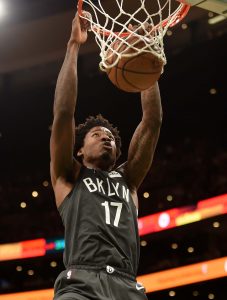The Warriors have committed only about $82MM in guaranteed money to player salaries for 2019/20, but that doesn’t mean the team will begin the offseason with $27MM of room under the projected $109MM salary cap. In fact, the Warriors won’t open the new league year with any cap space at all. Each of Golden State’s own free agents will be assigned a free agent amount – or “cap hold” – until the player signs a new contract or the Warriors renounce his rights.
The general purpose of a cap hold is to prevent teams from using room under the cap to sign free agents before using Bird rights to re-sign their own free agents. If a team wants to take advantage of its cap space, it can renounce the rights to its free agents, eliminating those cap holds. However, doing so means the team will no longer hold any form of Bird rights for those players — if the team wants to re-sign those free agents, it would have to use its cap room or another kind of cap exception.
The following criteria are used for determining the amount of a free agent’s cap hold:
- First-round pick coming off rookie contract: 300% of previous salary if prior salary was below league average; 250% of previous salary if prior salary was above league average.
- Bird player: 190% of previous salary (if below average) or 150% (if above average).
- Early Bird player: 130% of previous salary.
- Non-Bird player: 120% of previous salary.
- Minimum-salary player: Two-year veteran’s minimum salary, unless the free agent only has one year of experience, in which case it’s the one-year veteran’s minimum.
- Two-way player: One-year veteran’s minimum salary.
A cap hold for a restricted free agent can vary based on his contract status. A restricted free agent’s cap hold is either his free agent amount as determined by the criteria mentioned above, or the amount of his qualifying offer, whichever is greater.
No cap hold can exceed the maximum salary for which a player can sign. For instance, the cap hold for a Bird player with a salary above the league average is generally 150% of his previous salary, as noted above. But for someone like Kevin Durant, who is earning $30MM this season, 150% of his previous salary would go far beyond the maximum salary threshold.
Durant’s cap hold – assuming he turns down his 2019/20 player option, as expected – will be equivalent to the maximum salary for a player with 10+ years of NBA experience. That figure currently projects to be $38.15MM, based on a $109MM salary cap.
One unusual case involves players on rookie contracts whose third- or fourth-year options are declined, such as Dragan Bender, who had his fourth-year option turned down by the Suns. Because they declined that option, the Suns wouldn’t be able to pay Bender more than what he would have earned in the option year ($5,896,519).
That rule is in place so a team can’t circumvent the rookie scale and decline its option in an effort to give the player a higher salary — the rule applies even if the player is traded, so if a team had acquired Bender before this year’s deadline, that team would have faced the same limit. Rather than coming in at 300% of this year’s salary, as would be the case with most players coming off rookie scale contracts, Bender’s 2018 cap hold will equal the amount of his option: $5,896,519.
If a team holds the rights to fewer than 12 players, cap holds worth the rookie minimum salary are assigned to fill out the roster. So, even if a front office chooses to renounce its rights to all of its free agents and doesn’t have any players under contract, the team wouldn’t be able to fully clear its cap. In 2019/20, incomplete roster charges project to be worth $897,158, meaning a team with 12 of those charges would have nearly $11MM on its cap even before adding any players.
Cap holds aren’t removed from a team’s books until the player signs a new contract or has his rights renounced by the club. For example, the Warriors are still carrying cap holds on their books for David West and Matt Barnes, who haven’t signed new contracts since playing for Golden State. Keeping those cap holds allows teams some degree of cushion to help them remain above the cap and take advantage of the mid-level exception and trade exceptions, among other advantages afforded capped-out teams.
Note: This is a Hoops Rumors Glossary entry. Our glossary posts will explain specific rules relating to trades, free agency, or other aspects of the NBA’s Collective Bargaining Agreement. Larry Coon’s Salary Cap FAQ and the Basketball Insiders salary pages were used in the creation of this post.
Earlier versions of this post were published in previous years by Luke Adams and Chuck Myron.
 Ed Davis
Ed Davis